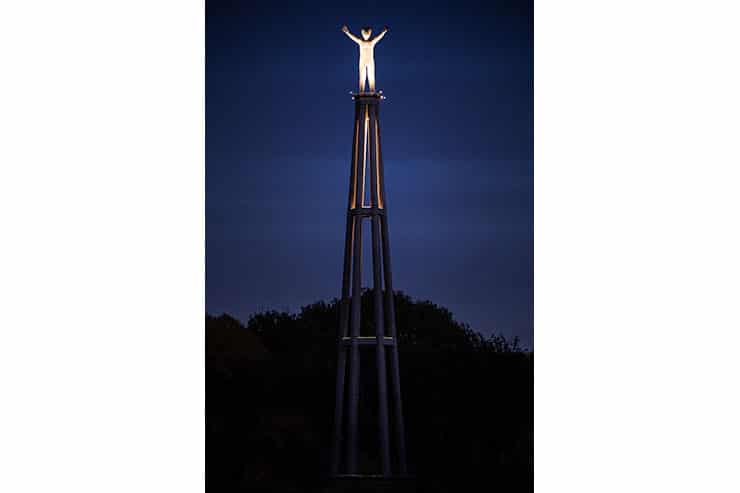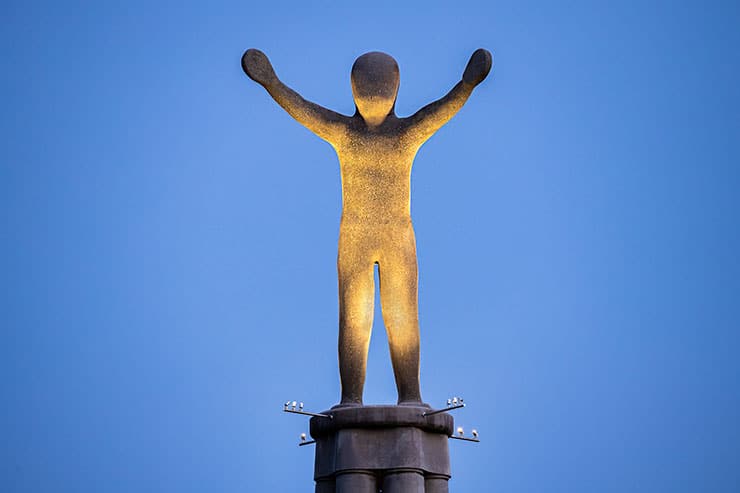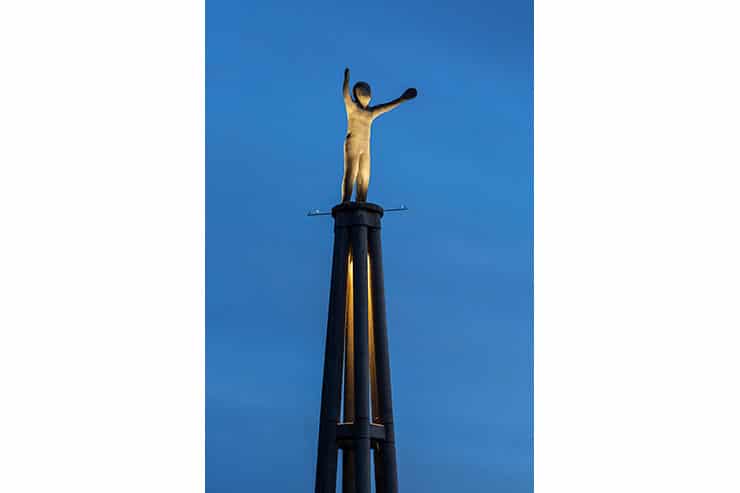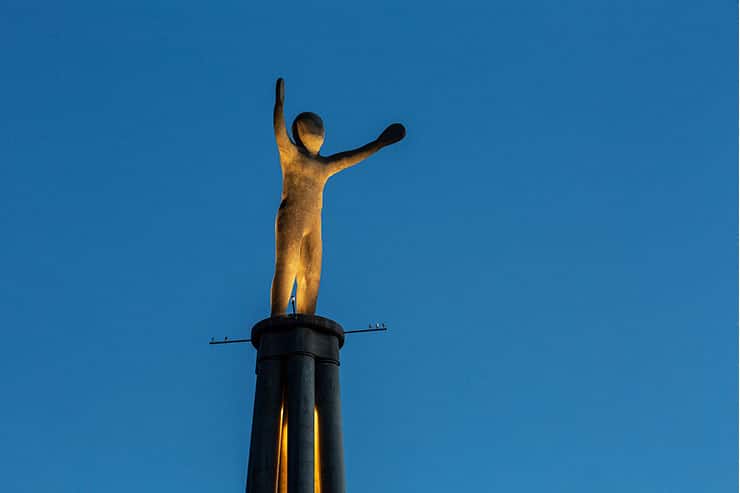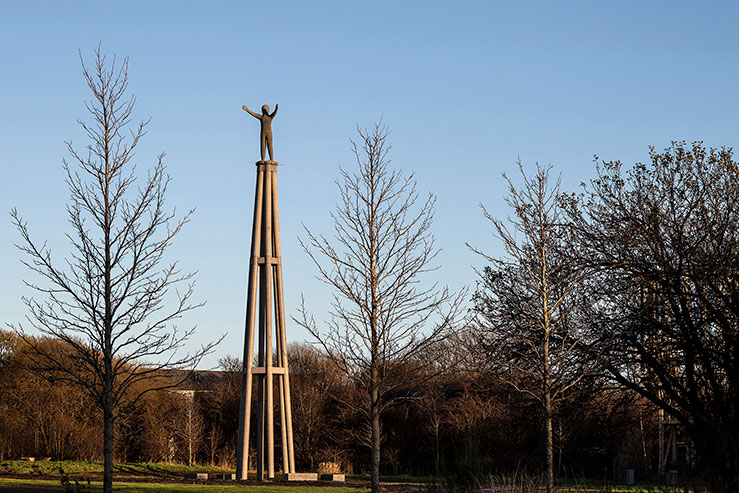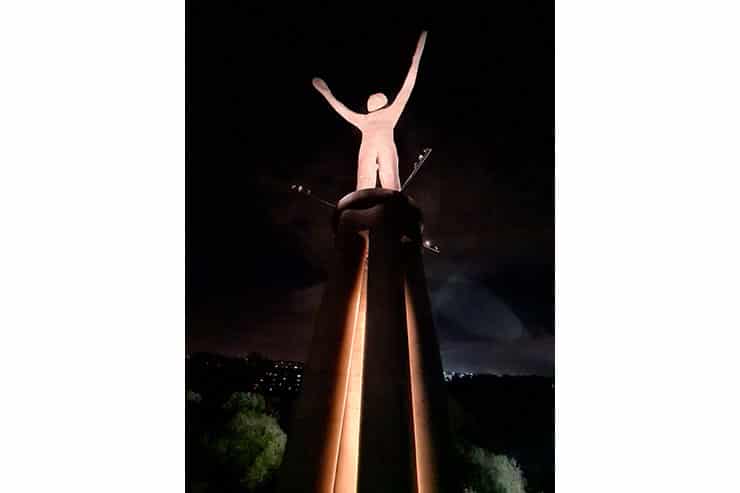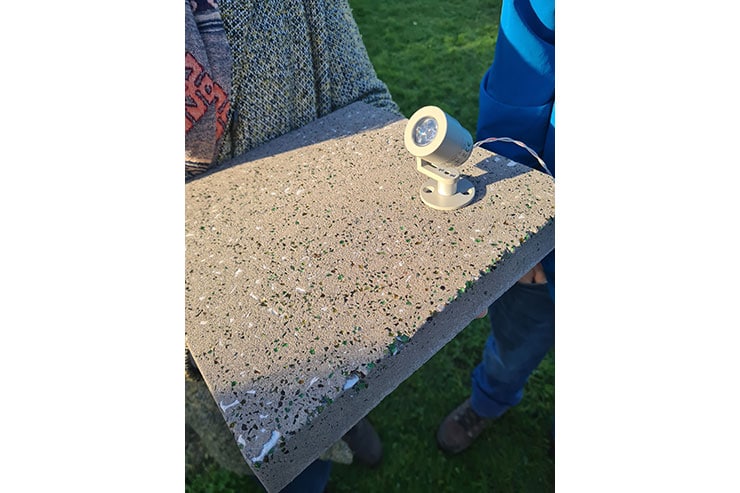- ABOUT
- JUDGING
- CONTACT
- MORE
- 2024 Entries
- Installations 2024
- Past Winners
- Subscribe
- [d]arc directory
- arc magazine
- darc magazine
Hope Sculpture, UK
ProjectHope SculptureLocationGlasgow, UKLighting DesignBuro Happold, UKArtistSteuart PadwickClientSteuart PadwickLighting SuppliersStoane Lighting, StudiotechPhotographyKeith Hunter, Fourfifteen
The Hope Sculpture, by artist/designer Steuart Padwick started as a conversation with Ramboll and became a gift from 50 companies to Glasgow. It is a testament to the power of collaboration and dedication to deliver a better future.
On the lighting aspects, the Hope Sculpture project became the first implemented project to incorporate both CIBSE TM65 and TM66 assessments for the lighting equipment utilised.
The Hope Sculpture is a new permanent public art installation situated in the natural landscape of Cuningar Loop, part of Clyde Gateway, Scotland’s biggest and most ambitious regeneration programme. Visible from long and short distance views, the 23m tall sculpture rises above the woodland. The sculpture is topped by an age/gender/race neutral child figure with their arms reaching out to a greener, hopeful future.
Linked to the COP26, the sculpture is being constructed using locally sourced low carbon, reclaimed, recycled or sustainable materials such as cement free concrete. It is a showcase for how leading industry partners are committed to build more sustainably, as we transition to a net zero future.
The Hope Sculpture aims to raise awareness of the fragility of both our environment and our mental health and the importance of our natural environment and community in supporting our mental well-being.
The need for environmentally considerate night-time illumination of the sculpture was part of the brief. Our lighting scheme was shaped keeping in mind the bigger picture as exterior lighting is a considerable contributor in the energy demands of the built environment. If not designed appropriately, lighting has adverse effects on climate resilience. Despite its undoubted benefits, uncontrolled lighting creates light pollution. In turn, light pollution results in a chain effect including energy wastage, disruption of ecosystems, season shifting and effects on human physical and mental health. In alignment with the project’s ethos and with sustainability at the forefront of our lighting principles, we designed the lighting for the Hope sculpture with respect to the natural environment and our planet. We utilised programmable light sources of low power and high efficacy, reducing the operating demands. We sought to use existing or re-purposed lighting equipment from local Scottish manufacturer Stoane Lighting minimising embodied carbon emissions. The equipment’s small scale, premium built quality, interchangeability of components and the commitment for future service of components contribute further to reducing direct and collateral embodied carbon aspects of the lighting installation and the project in total whilst enhancing the equipment’s advanced circularity.
The Hope Sculpture project provided us with a great opportunity to put the CIBSE’s TM65 and newly launched TM66 sustainability metrics in test in a real project. As the lighting industry is at the early stages of development on these aspects, there is plenty of room for improvement on all fronts. This project will remain as a reference point in Buro Happold’s ongoing endeavours to design, specify and provide consultancy services towards sustainable projects. Our next steps include continued engagement through forums with manufacturers and clients and including carbon and circularity input in our design criteria.
Key Project collaborators:
Artist/Designer: Steuart Padwick,
Project Director: Natalie Alexopoulos
Engineering and Marketing support: Ramboll
Lead Contractor: Urban Union
Cement free Concrete: Aggregate Industries
Primary build: Keltbray
Area Management: Clyde Gateway
Lighting Design: Buro Happold
Lighting manufacturer: Stoane Lighting
Lighting Controls: Studio Tech
